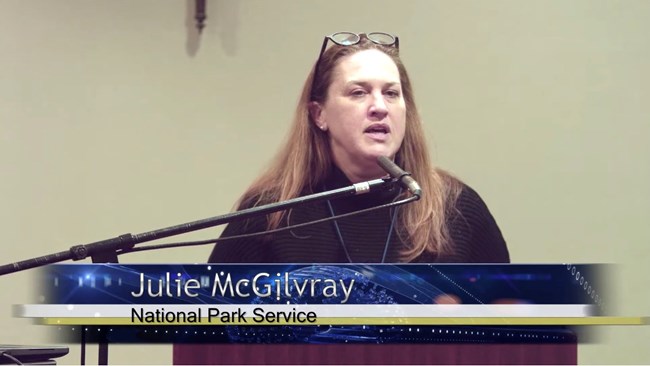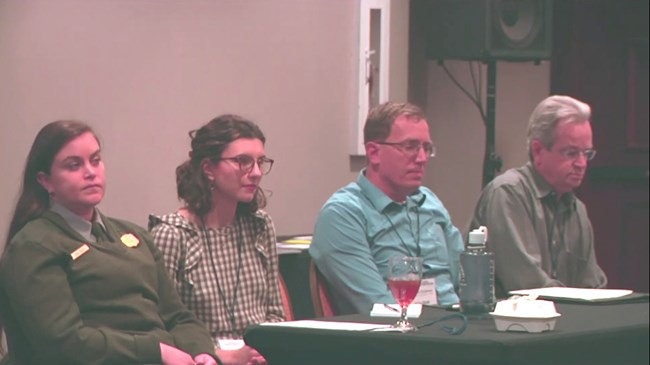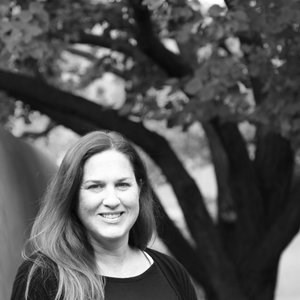Last updated: April 7, 2025
Article
Introduction: Use of 3D Data in Carlsbad Caverns
National Center for Preservation Technology and Training
This presentation, transcript, and video are of the Texas Cultural Landscape Symposium, February 23-26, 2020, in Waco, TX.

National Park Service
Julie McGilvrey: We're going to start, we have a long presentation for you all. This is a full hour. This is on a project that a lot of people have been involved with and this is what we're talking about when we do cultural landscape projects, how many people it takes to come to the table and do work like this.
This project was something that I've been working on for four years. It was handed to me when I was in the regional office in Santa Fe. This was a mitigation project for damage done inside of Carlsbad Caverns National Park by park staff that predates everyone at that park right now. So everyone has inherited this project.
The project was complicated because I was told to complete a cultural landscapes inventory (CLI) inside of Carlsbad Caverns and I didn't know how to do that. So, I had some long conversations with the superintendent who's in the back of the room, Doug Neighbor. Thank you for being here. And our conversations were about how to document the cave well, document it how we needed it documented to do a cultural landscapes inventory and a national register nomination. And also, how we could push the field forward because we want to do that with each project we do, and how we could then use that information to take care of these resources inside the cave going forward.

National Park Service
The cave is a UNESCO World Heritage site, being a natural resource. So we've got some tension there, right, between the cultural and natural. So, the way forward was to do the CLI with a point cloud. So we did LiDAR on the inside of the cave and that's what you're going to see a lot about today. And then we struggled with what that meant when we had all this LiDAR. And we're going to get into how big the point cloud was and what that looked like and how we use that going forward as a park and as the park service and all the challenges and lessons learned from this project.
This project continues on. We are wrapping up the CLI and it will move into a cultural landscape report, and we'll use the LiDAR for that. And Robert Melnick will be taking that project on with the park staff. So again, this was a massive collaboration. It is ongoing and we're learning lots and we'll get into all the different pieces of this.
So, when I started, I needed a good team, and I was lucky enough to know Kimball Erdman at the University of Arkansas, and he's going to introduce himself more when he comes up to talk. We started work together at Buffalo National River with Robert Melnick. And when I was there, I visited the University of Arkansas, I got to meet the folks from the Center for Advanced Spatial Technologies, also at the University of Arkansas. And through that connection I met Malcolm Williamson. And so, what I knew that I had at the University of Arkansas was a team, a landscape architecture team, and a tech team for LiDAR and it was the right combination.
So I called them and asked them if they wanted to work on this project with us. It seemed like the right fit. And they were willing to take it on and we sort of blindly walked into the challenges of this. I think there were some stunned moments when we started working inside the cave and just how big it was and crazy and wild in there.
So, we ended up with the data. Kimball has been working very hard on the CLI, which is incredible. And then we added another component to it, which you'll hear about today. I was lucky enough to have an intern, Claire Gorman, she's with us there, from Yale University this past summer. She's in architecture and computer science, and we had her explore new ways of using LiDAR information inside of a cultural landscape to understand the relationship between the design landscape and the viewshed inside the cave. And her work is tremendous and she's going to introduce that to you today too.
And then, finally, I've been working along with Erin Gearity now for a long time. She is the Cultural Resources Program Manager at Carlsbad Caverns, and she will get into how the park plans to use this data beyond the cultural landscape study.
So, with that, I'll give you Malcolm Williamson. He's going to lead us in this conversation, and we hope we have a little bit of time for questions afterwards.

National Park Service
Speaker Biography
Julie McGilvray is the cultural resources program manager for Guadalupe Mountains National Park in West Texas, where she manages the park’s historic structures, cultural landscapes, archeology, museum collections, and ethnography programs. She previously led the Santa Fe, NM-based National Park Service Intermountain Region’s cultural landscapes program and served national park units throughout the Rocky Mountains, from Montana to Texas. Her background and education is in archeology, historic preservation, and landscape architecture.
